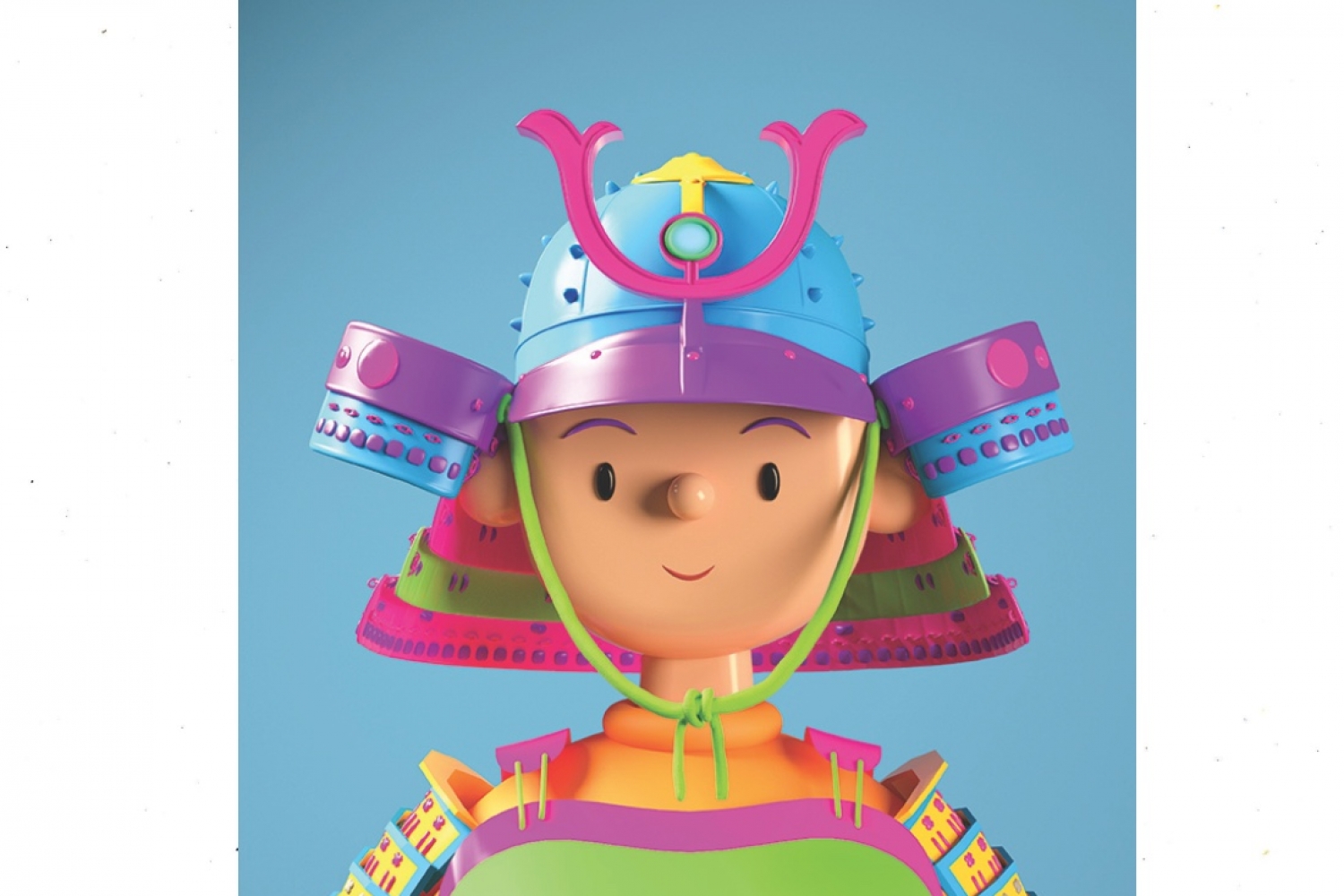
Amrit Pal Singh, Samurai Toy Face, 2021, 3000 x 3000 pixels, Digital image file, Unique edition NFT.

Amrit Pal Singh, Samurai Toy Face, 2021, 3000 x 3000 pixels, Digital image file, Unique edition NFT.
Boom or bust? Fad or here to stay? Anti-climate or inevitable change? Some of the paradoxes that are NFTs and blockchain. A paradox is defined by the Oxford dictionary as ‘a seemingly absurd or contradictory statement or proposition which when investigated may prove to be well founded or true’. Deciding whether it’s a paradox comes later, we first have to work at a 101 on the underlying technology that supports NFTs and perhaps the value it’s interlaced with. Words like democracy and decentralisation are thrown around with much ease in this world.
Blockchain is defined by IBM as ‘a shared, immutable ledger that facilitates the process of recording transactions and tracking assets in a business network. An asset can be tangible (a house, car, cash, land) or intangible (intellectual property, patents, copyrights, branding). Virtually anything of value can be tracked and traded on a blockchain network, reducing risk and cutting costs for all involved’. In the world as we know it, a contract or transaction and its proof is what makes the basis of all business and hence, to ensure that this is digitised and made immutable, is the obvious next step for mankind.
Blockchain was first introduced as the backend ledger for Bitcoins and has since developed its own acceleration. It was introduced by Satoshi Nakamoto (a pseudonym for an individual or a group of individuals). In 2014, Vitalik Buterin founded the Ethereum Foundation, as a decentralised application platform. This perhaps was one of the pivotal moments for blockchain. Cut paste to my favourite use cases of blockchain technology. The most abused and yet celebrated word of 2021 – NFT aka Non-Fungible Token.
‘A non-fungible token (NFT) is a unit of data stored on a digital ledger, called a blockchain, that certifies a digital asset to be unique and therefore not interchangeable. NFTs can be used to represent items such as photos, videos, audio and other types of digital files’ (https:// hbr.org/2017/01/the-truth-about-block- chain). To put it simply, NFTs establish ownership, they establish scarcity and allow for provenance tracking. We are also seeing NFTs unleashing a new kind of artist, Jack Dorsey sold his tweet as a NFT, someone recently sold a house on NFT, but of course the largest use case of NFTs is the digital artist’s artworks. It allows them to validate its scarcity, proves ownership and allows resale. Royalties for the artist can be programmed in the conditions of the NFT and hence, finally the artist can reap the benefits of his/her creation in perpetuity.
I feel, NFTs are the ‘photography’ moment for the arts and has the poten- tial of multiplying the market for arts and perhaps even converting the ‘maybe investment’ art world into a firm world of investments. NFTs have unleashed digital artworks (albeit a lot leaves much to be desired by the intellectual mind and eye) and have created new market dynamics. Collectibles, music, graphics, sports, his- toric facts, avatars etc. have all now been included in the realm of art.
Jefferies sees the NFT market being at 80 Billion USD by 2025. Compare this to 55 billion USD, which is the current market size for all fine arts – globally. Let that sink in. A market that has existed since we traded to a new market which is just about five years old. However this world of NFTs is also plagued by its own set of deviants, its onset of issues and some very complex ones at that. Plagiarism, ownership and transference of Intellectual Property Rights, its damaging effect on our environment, originality, quality of content, market whales that are openly sand washing and of course lots of misinformation.
Do the wrongs make the rights worth it? I would say yes, 85% people benefit. From the quiet artist who works at an advertising agency, who can finally make digital art and make a living off it, to a young techie who only values and understands the digital world and hence their purchase maybe a cryptopunk – the world is finally becoming more democratic and making allowances for all those who think differently and therefore want different things defining their ‘taste’. Is this a world full of paradox? Of course it is. That’s what makes it challenging, allows discourse, allows the weird ones in and eventually we will definitely see,it will change the world of art as we know it.
This article is an all exclusive from our Bookazine. To read more such articles, grab your copy here.
Text Aparajita Jain
Date 18-06-2022